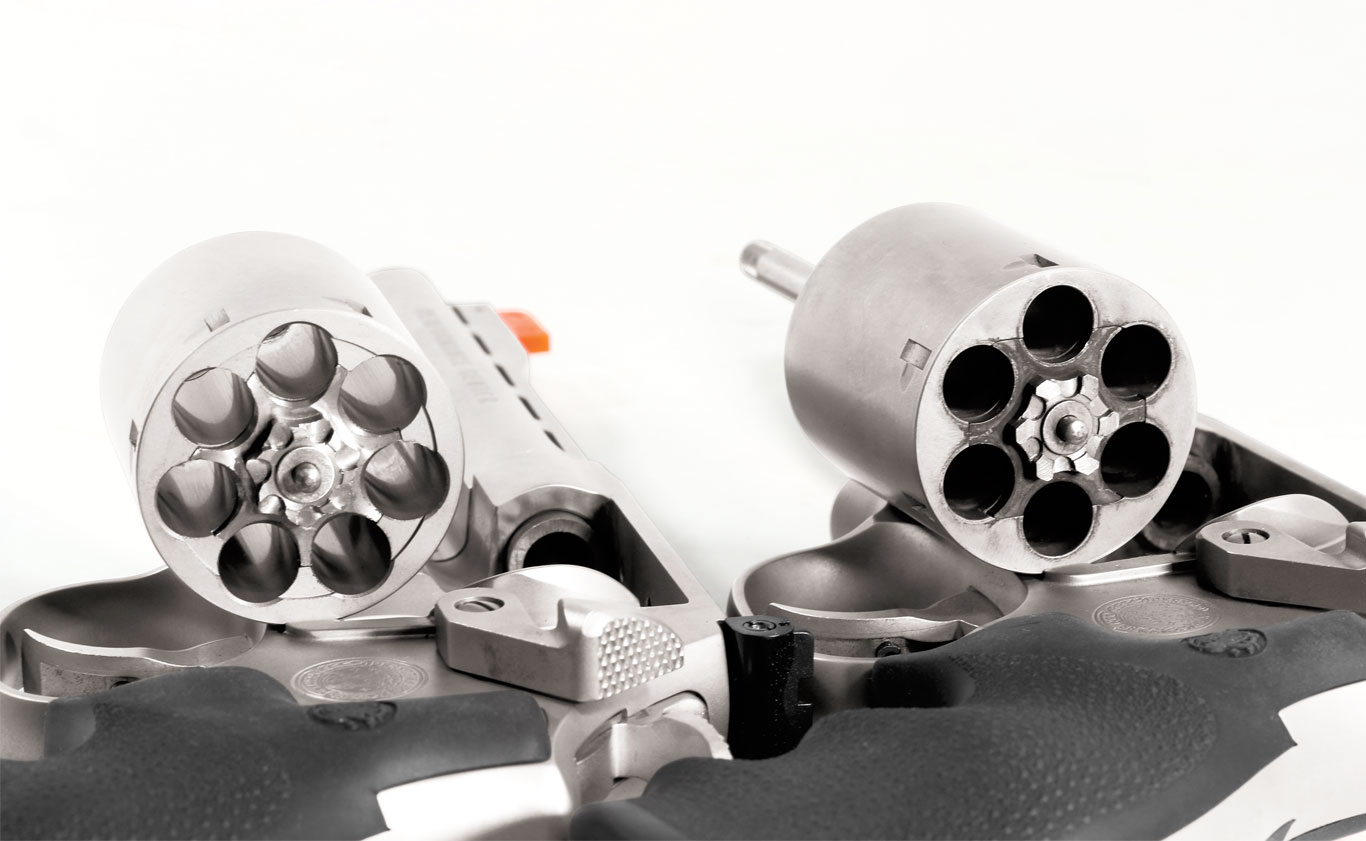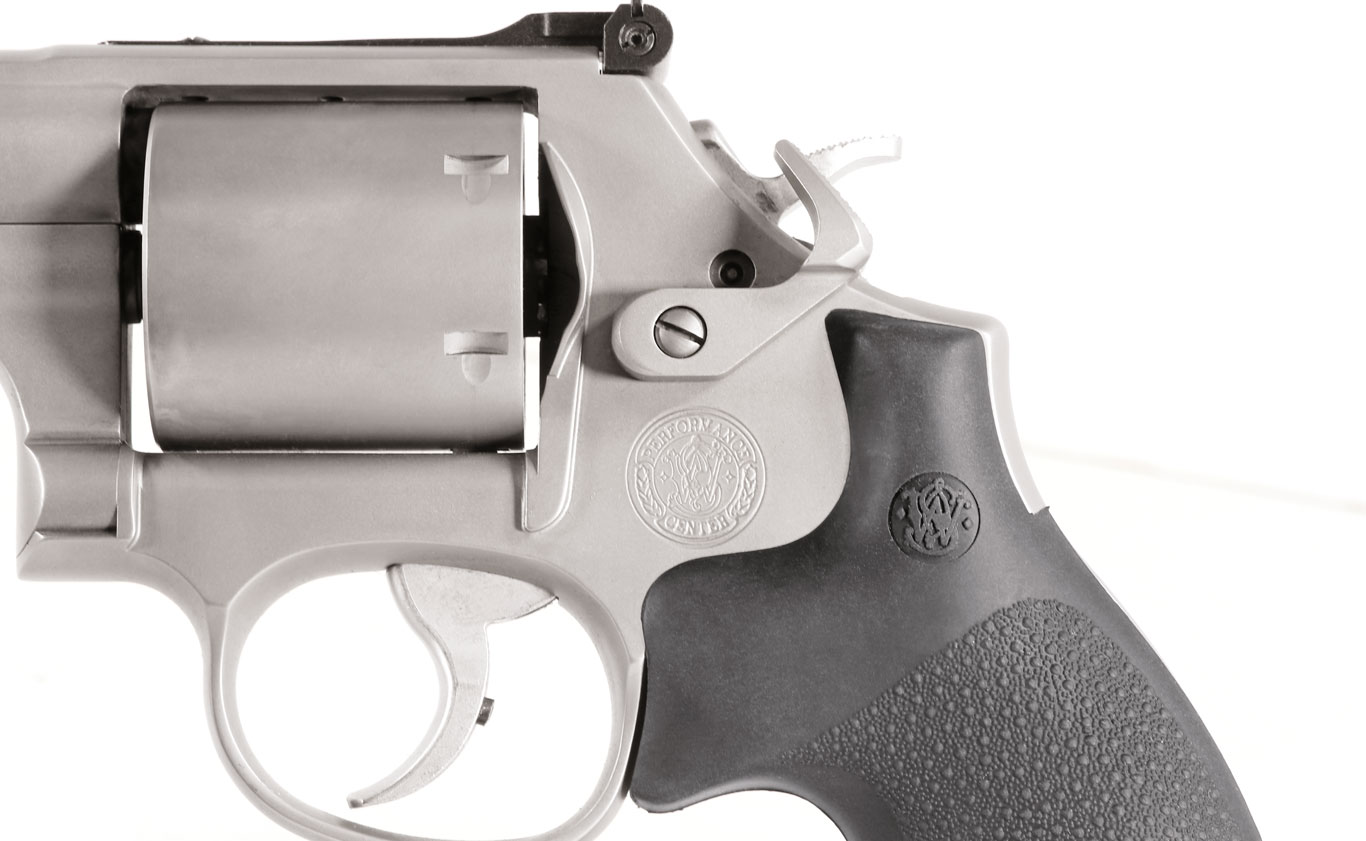
The five-inch 686 (l.) holds seven shots and is cut for moon clips while the four-incher (r.) is a six-shot gun that is loaded conventionally.
The Performance Center, a sub-brand within the Smith & Wesson family, has come out with a pair of new Model 686 revolvers—one with a four-inch barrel, the other with a five-inch barrel—that have you covered whether you’re a dedicated wheelgun competitor or someone who likes to carry a revolver for defense. The Performance Center is the in-house custom shop of Smith & Wesson, and it is staffed with pistolsmiths who have decades of experience.
The Model 686 has been around since 1980. It solved the problem law enforcement officers (who still carried revolvers then) were having with Smith’s K-frame guns in .357 Magnum. The repeated hammering from magnum loads proved too much for the frame size, so the company merged its big N frame and its .44 dimensions on the front end with the K-frame grip and trigger action geometry on the back end. The resulting L-frame gun also benefited from an increase in cylinder diameter, which was boosted just enough to let it shrug off the pounding of .357 Magnums, and a full-length underlug that added weight out front to help handle recoil.
In a nod to the popularity of shooting revolvers in competition, the new Performance Center 686s are built with “staging” triggers. The double-action trigger can be pulled to the point just before it releases the hammer, held there—staged—and then it takes just a little more pressure to fire the gun. Some shooters like to do it this way, some like to pull straight through, and the beauty of a stage-able trigger is you can do it either way.

Unlike conventional revolvers, the Performance Center 686s have competition-style

